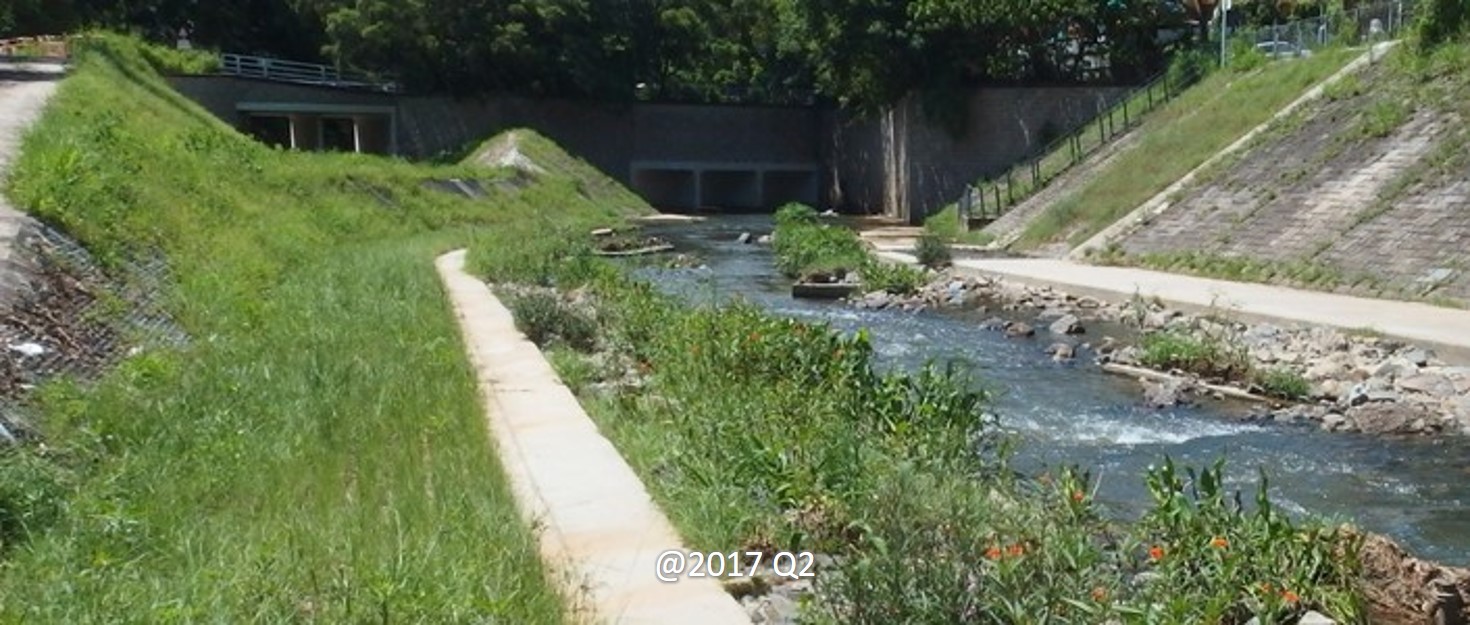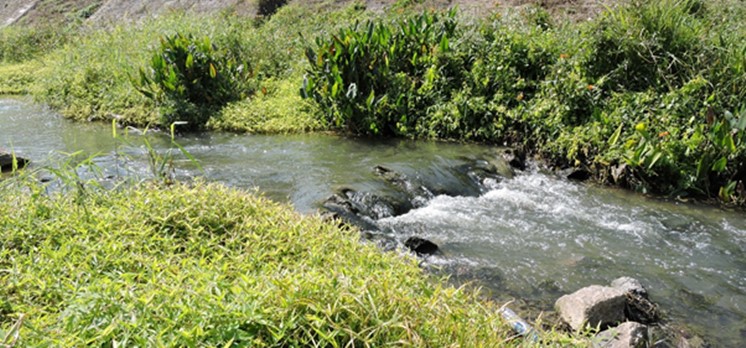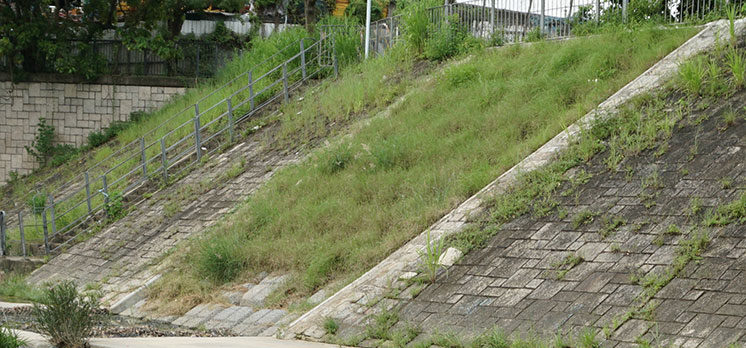Explore Site Trial
We show representative green features in 26 channel sections to illustrate this endeavour and broaden our understaning of river ecology.
To further study the effectiveness of different ecological enhancement measures, two sections of Ma Wat River were selected for site trials. In late 2015, enhancement works commenced at sections near Fanling Highway and Jockey Club Road.
The objectives of the enhancement is are to promote the recolonization of wetland associated flora and fauna and to improve the aesthetic value of the channel. A monitoring programme for before and after enhancement is adopted and the changes in the enhanced channel section are revealed…
Enhancement Summary
The enhanced upstream section comprises an approximately 250m long trapezoidal grasscrete embankment channel with rip-rap lined bed. Riparian trees were planted at the grasscrete embankment to provide shading and habitats for associated wildlife.
The enhanced downstream section covers an approximately 80m long trapezoidal concrete lined channel. A more natural river bed and riparian zone was provided. Diverse aquatic habitats such as pools, riffles, resting ground for birds and emergent vegetation were established to support aquatic wildlife. New greening materials for the embankment have been installed to enhance the landscape value.

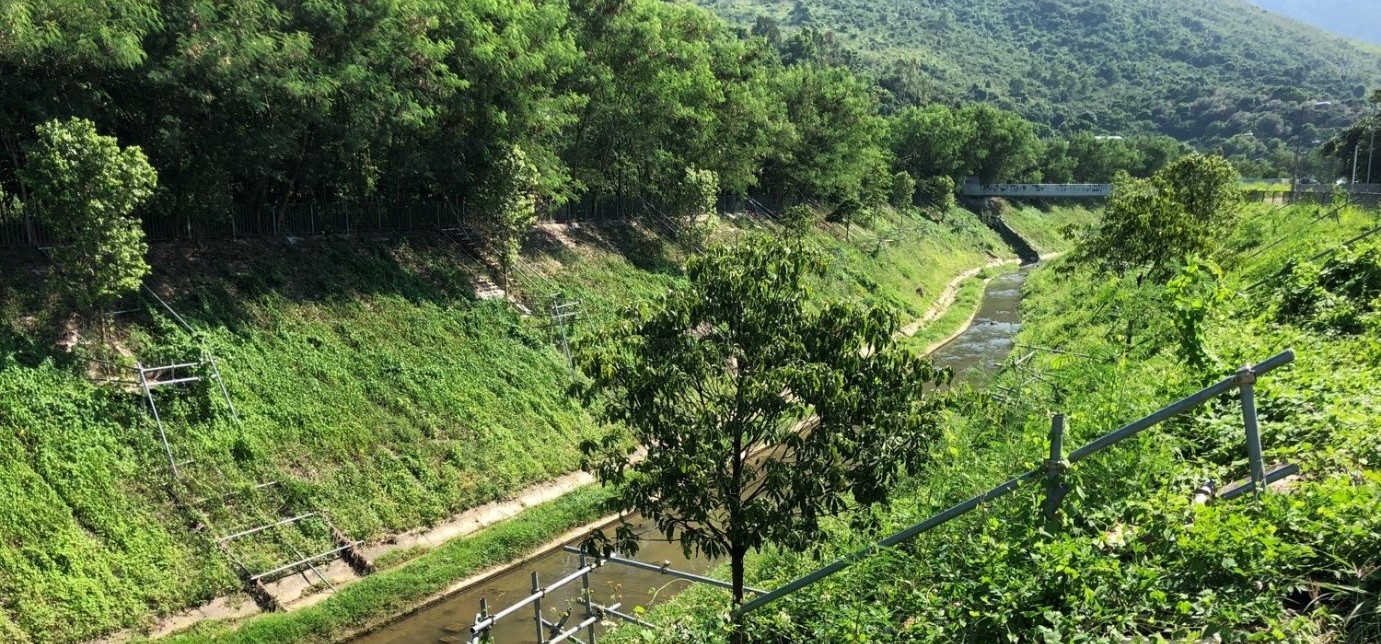
Trees planted along the channel can provide shading for the in-stream channel. Trees are also utilised by bird species. Leaf litters can be a food source and substrates for the wildlife and aquatic species.

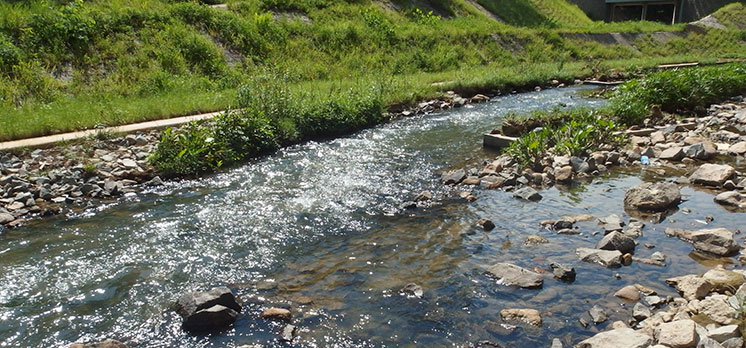
Ponds play an important role in maintaining aquatic life and provide an essential habitat to fauna such as fish and water birds. A shallow pond provides bird landing and resting points, and also facilitates the establishment of emergent plants which can attract birds. The riffles increase aeration in the river channel. Crevices of riffles filled with gravel and sand provide habitat for some aquatic invertebrate species.

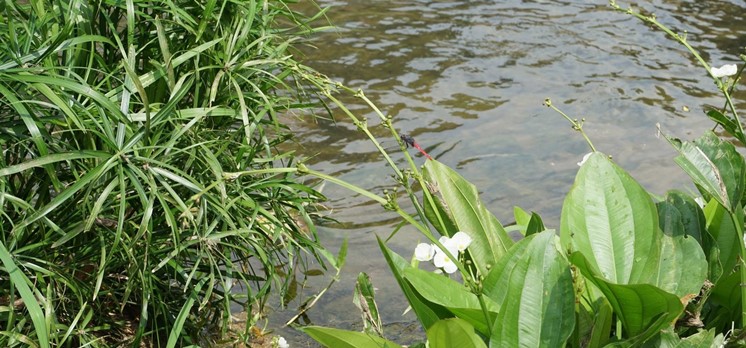
Both wetland and terrestrial vegetation are established near the low flow channel to support stream associated wildlife. Riparian vegetation is important for aquatic habitat for the following reasons:
- to provide ecological linkage to adjacent habitats by re-establishing the riparian habitats along and within the river channel;
- to provide shading along river channel to maintain a stabilized water temperature;
- to provide leaf litters as food source for the wildlife and aquatic organisms;
- to stabilize the stream bank to prevent erosion;
- to filter nutrients and sediments to improve water quality;
- to modify stream flow, create resting cover pools or retain gravel to improve fish habitats;
- to provide off-channel refuge for invertebrates;
- to provide nutrients to enrich aquatic system; and
- to provide habitats for nesting, roosting, foraging and other wildlife activities

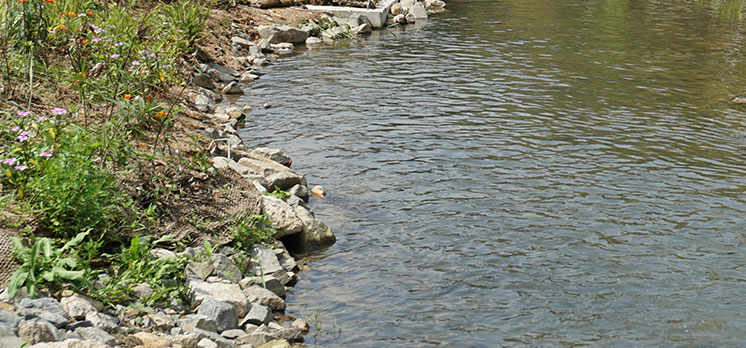
A sinuous channel is more stable and aesthetically pleasing. reduces flow velocity and improves the variability of water flow conditions. It also creates micro-habitats such as pool, cascade, run, guide, etc.
Green Element Introduction
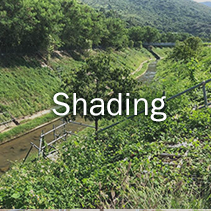
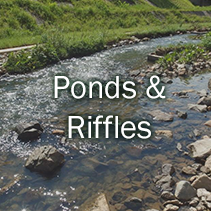
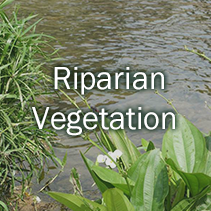
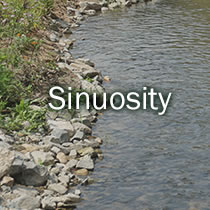
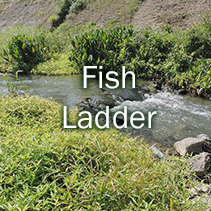
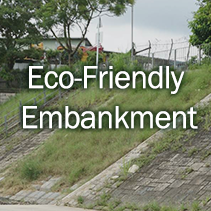
Current Findings
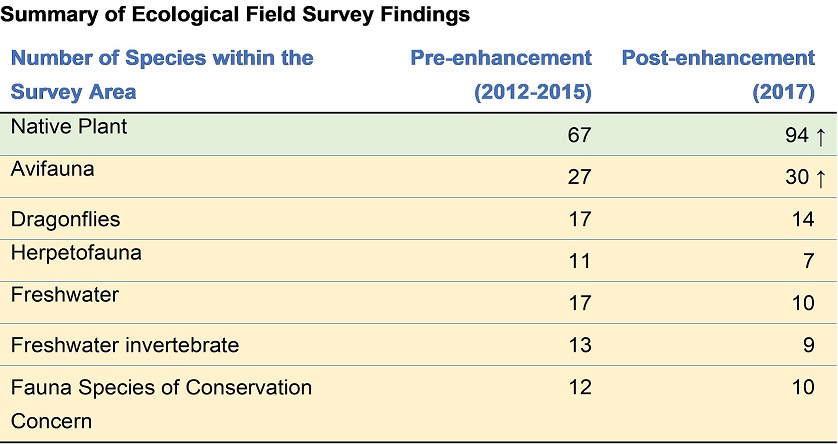
More plant species were recorded along the watercourse of Ma Wat River during post-enhancement surveys. More native and wetland dependent plant species were found along the water margin of the river channel which provide more micro-habitats for a variety of fauna. During post-enhancement monitoring, the number of species for fauna groups (including wetland dependent avifauna, dragonflies, herpetofauna, freshwater fish and freshwater invertebrates) along the survey area are slightly less than the number of species recorded in pre-enhancement surveys. It was observed that the suspended solid concentration along the surveyed river section (both upstream and downstream of the enhanced section) has increased significantly. High suspended solid concentration may diminish the habitat quality. After the implementation of enhancement measures, some physical factors of the channels such as the number of types of aquatic habitats and the longitudinal connectivity of the channel have been improved. Riffles, pools and root of the vegetation mats, which provide a more diverse and complex habitat for wildlife, can be observed in the enhanced section. However, as the post-enhancement habitat has not been stabilised and required a longer period for establishment, thus, continuous monitoring is recommended to obtain more information to draw a conclusion on the trend.





